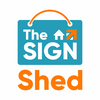
No Cycling Sign
Pickup available at Allerton Bywater Network Centre, West Yorkshire
Usually ready in 24 hours
Keep pedestrians safe and clearly communicate that cycling is prohibited in designated areas with this high-visibility No Cycling Sign. Featuring a bold black bicycle pictogram inside the familiar red circle-slash prohibition symbol, it's fully compliant with EN ISO 7010 standards and easily recognisable at a glance. Ideal for footpaths, pedestrian zones, parks, construction sites, or private access routes, it helps encourage safe traffic flow and deters inappropriate cycling.
Manufactured in Britain from durable, weather-resistant materials—rigid plastic, recyclable plastic, or composite aluminium—each sign is both robust and eco-friendly. Pre-drilled fixings in the corners ensure quick, hassle-free installation (holes included at no extra cost). As a prohibition sign, it helps you meet the Health & Safety (Safety Signs and Signals) Regulations 1996 under HSE guidance, reinforcing compliance in public and workplace environments.
Trusted nationwide, The Sign Shed offers exceptional quality and UK manufacturing. Choose the No Cycling Sign to enhance safety, minimise confusion, and promote pedestrian protection—all without sacrificing sustainability or style.
